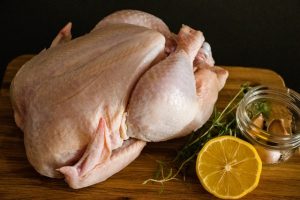9 Unique Uses for Allspice: A blog about the uses for allspice.
Allspice is one of the most versatile and flavorful spices known to man. It has a wide range of uses and can be used in both sweet and savory dishes. Allspice can be used whole or ground, but be sure to grind it fresh.
Allspice is one of the most versatile and flavorful spices known to man. It has a wide range of uses and can be used in both sweet and savory dishes. Allspice can be used whole or ground, but be sure to grind it fresh!
The most common use for allspice is in Caribbean jerk seasoning, where it often stands alone as the sole spice added to pork, chicken or seafood before grilling.
This powerful little berry packs a lot of flavor into a small package: it tastes like a combination of cinnamon, nutmeg, cloves and pepper. But don’t limit yourself to using allspice just in Caribbean dishes! It’s also great sprinkled over fruit salads or mixed into apple pie filling.
Allspice is a spice that is used in baking, cooking and food preservation. It’s also known as Jamaican pepper, myrtle pepper, pimenta, pimento, English pepper or newspice. It’s made from the dried fruit of Pimenta dioica trees, which are native to Central America and the West Indies.
Allspice is used to preserve meat in Mexico and Central America. In Jamaica allspice is often used in jerk seasoning (the Jamaican method of flavoring and cooking meat). In Europe it’s often added to pickling spices. Allspice has a similar flavor profile to cloves and cinnamon, with hints of nutmeg.
9 Unique Uses for Allspice
1. Add allspice to red wine vinegar for an easy pickling solution
2. Make your own chai tea by brewing black tea with milk, honey and allspice
3. Make homemade sausages with allspice
4. Make an allspice rub for meat
5. Add allspice to stewed fruit or compotes
6. Grind up some whole allspice berries and use them where you would normally use ground cinnamon or pumpkin pie spice
7. Use ground allspice
Allspice is a spice that can be used in both sweet and savory recipes. What is allspice? Allspice is the dried, unripe berry of the pimento tree, which is native to the West Indies and Central America. The name allspice was coined by the English, who thought it combined the flavor of cinnamon, nutmeg and cloves.
In addition to its use in recipes, allspice has a number of medicinal uses. It has been used as an antispasmodic and as a remedy for rheumatism, flatulence and nausea. When applied directly to the skin, it relieves pain from sore muscles and arthritis.
Here are some unique ways you can use allspice:
Allspice is a spice that is the dried unripe berry of the pimenta dioica plant. The name allspice was coined as early as 1621 by the English, who thought it combined the flavor of cinnamon, nutmeg, and cloves. Allspice has a complex flavor that is not quite like any other spice. The best way to describe this is that it tastes like a combination of nutmeg and cinnamon with some other fragrant spices mixed in.
Allspice has many culinary uses and can be used in both sweet and savory dishes. It can be used in marinades for meat, curries, pickling, pot roasts, cakes and cookies. Some people even use it in gumbo or chili!
Allspice does lose its flavor over time so if you purchased pre-ground allspice you should test its flavor before using it in recipes. If your pre-ground allspice tastes weak or stale you can rejuvenate it by placing it in an airtight container with a piece of apple or potato to absorb some of the moisture. Leave it overnight and then remove the fruit and replace the lid on your container. This should restore its flavor but if not you will need to purchase whole berries
Allspice is a spice made from the dried, unripe berry of Pimenta dioica, a mid-canopy tree native to the Greater Antilles, southern Mexico, and Central America, now cultivated in many warm parts of the world. The name “allspice” was coined by the English, who thought it combined the flavor of cinnamon, nutmeg and cloves.
The term “allspice” was also coined as early as 1621 by the English, who thought it combined the flavour of cinnamon, nutmeg and cloves.
The allspice tree reaches a height of about 10–18 metres (30–60 ft). Allspice branches are smooth; the leaves are glossy, green, elliptical, and opposite. The flowers are yellowish white, with five petals. The fruit is a small pea-sized berry that is green when unripe and dark brown when ripe. Allspice berries contain up to 30% oil.
Allspice can be used in cooking either as whole allspice berries or ground allspice powder. Allspice is one of the most important ingredients of Caribbean cuisine. It is used in Caribbean jerk seasoning (the wood is used to smoke jerk in
Allspice is a unique spice that can be added to both sweet and savory dishes. It’s listed in recipes for candied yams, baked ham, chili, cookies and even eggnog. It has a flavor similar to cloves and cinnamon with a hint of nutmeg. You’ll find many uses for this spice – here are some ideas to get you started:
1. Add 1/2 teaspoon of allspice to your favorite pumpkin pie recipe.
2. Mix allspice into vanilla frosting or cream cheese frosting and spread onto pumpkin or gingerbread cupcakes.
3. Add 1/8 teaspoon of allspice to the chocolate cake batter before baking a batch of chocolate cupcakes.
4. Use 1/2 teaspoon of allspice as part of the liquid component in a pork marinade.
5. Add 1/4 teaspoon of allspice to your next batch of sweet potato casserole or candied yams for an extra kick of flavor.
6. Sprinkle just a tiny bit (1/16 teaspoon) on top of chai tea before serving for an extra special touch.
7. Mix 1/4 teapsoon into apple cider while heating it up on the stovetop

